Dr. Gary Null
See book keywords and concepts | 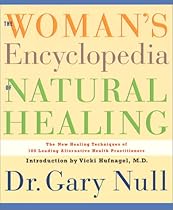 Also, citrus fruits can be a problem because they increase intestinal absorption of copper. The flavor-enhancer MSG, which binds transport copper between blood and tissue, is another potential migraine-inducing agent. The copper-migraine link seems to stem from copper's role in the metabolism of vasoneuractive amines.
D. P. Harrison, "Copper as a Factor in the Dietary Precipitation of Migraine," Headache 26, no. 5 (1986): 248-50.
Approximately 30 to 40 percent of patients suffering from migraines experience relief by eliminating specific foods from the diet.
L. E. Also, citrus fruits can be a problem because they increase intestinal absorption of copper. The flavor-enhancer MSG, which binds transport copper between blood and tissue, is another potential migraine-inducing agent. The copper-migraine link seems to stem from copper's role in the metabolism of vasoneuractive amines.
D. P. Harrison, "Copper as a Factor in the Dietary Precipitation of Migraine," Headache 26, no. 5 (1986): 248-50.
Approximately 30 to 40 percent of patients suffering from migraines experience relief by eliminating specific foods from the diet.
L. E. |
Earl Mindell and Hester Mundis
See book keywords and concepts | 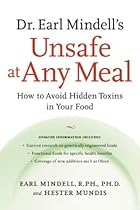 Best sources are oatmeal and other rolled oat products, dried beans, apples, citrus fruits, carrots, cauliflower, cabbage, dried peas, green beans, potatoes, squash, and strawberries.
CAUTION Same as for cellulose and hemicellulose, but these can also interfere with the effectiveness of certain antifungal medications containing griseofulvin, such as Grifulvin V, Grisactin, and Fulvicin, which are used to combat fungus infections.
LIGNIN
Lignin is an insoluble fiber that reduces the digestibility of other fibers. Best sources are oatmeal and other rolled oat products, dried beans, apples, citrus fruits, carrots, cauliflower, cabbage, dried peas, green beans, potatoes, squash, and strawberries.
CAUTION Same as for cellulose and hemicellulose, but these can also interfere with the effectiveness of certain antifungal medications containing griseofulvin, such as Grifulvin V, Grisactin, and Fulvicin, which are used to combat fungus infections.
LIGNIN
Lignin is an insoluble fiber that reduces the digestibility of other fibers. | | Examples: oat bran, legumes, citrus fruits.) Insoluble fiber is a tougher variety. It doesn't break down in water, but it does absorb it, causing waste to move through and out at a quicker pace. (Examples: wheat bran, whole grains, beans.)
The important point to remember is that the more refined a food is, the less fiber it has. In other words, applesauce would have half as much fiber as a raw apple, and white bread has about eight times less than whole wheat.
FOOD FOR THOUGHT
?Brown rice, already rich in nutrients, can be boosted in nutritional value by soaking it. | | Note: Because stress speeds up potassium loss, be sure to include bananas, potatoes, citrus fruits, and other potassium-rich foods in your daily diet.)
153. Foods Can Be Sex Sinkers
Just because you or your partner is not in the mood for love as often as you'd like to be doesn't necessarily mean that something is missing in your relationship. It could be missing from your diet.
A deficiency in zinc can cause a definite diminution of your sex drive. | | Boosting Your Body's Defenses THE NATURAL "RAMBOS"
Carrots, fish (sardines, salmon, mackerel), skim milk, citrus fruits, green leafy vegetables, wheat germ, whole grains, bran, soybeans, broccoli, brus-sels sprouts, eggs, sesame seeds, brown rice, nuts, onions, pumpkin seeds, ground mustard, brewer's yeast, propolis, papaya
THE RIGHT FUEL
?A diet low in fat and high in complex carbohydrates, especially those that are rich in fiber, will strengthen the immune system.
? |
Dr. Gary Null
See book keywords and concepts |  Broccoli, parsley, cherries, grapes, peppers, melons and citrus fruits are good food sources.
AROMATHERAPY
"Aromatherapy is fantastic for helping women regain their sense of sensuality," declares aromatherapist Ann Berwick. These are some of the oils she recommends:
Rose is wonderful for enhancing feminine qualities. It bring out the loving, tender side of us that wants to surrender. Men who have trouble showing their emotions or opening up to their partner can benefit from rose as well.
Clary sage heightens sensation. Broccoli, parsley, cherries, grapes, peppers, melons and citrus fruits are good food sources.
AROMATHERAPY
"Aromatherapy is fantastic for helping women regain their sense of sensuality," declares aromatherapist Ann Berwick. These are some of the oils she recommends:
Rose is wonderful for enhancing feminine qualities. It bring out the loving, tender side of us that wants to surrender. Men who have trouble showing their emotions or opening up to their partner can benefit from rose as well.
Clary sage heightens sensation. |
Stephen T., M.D. Sinatra
See book keywords and concepts |  Bioflavonoids, concentrated in citrus fruits (especially in the pulp and white of the rind), also have estrogenic properties and have been helpful in controlling hot flashes, anxiety, and mood swings in some women.
Certain dietary restrictions may be beneficial to women undergoing the transition of menopause. These guidelines may also help young women coping with premenstrual syndrome. Foods with a high fat content, refined sugars, and chemical additives disrupt hormone production. Bioflavonoids, concentrated in citrus fruits (especially in the pulp and white of the rind), also have estrogenic properties and have been helpful in controlling hot flashes, anxiety, and mood swings in some women.
Certain dietary restrictions may be beneficial to women undergoing the transition of menopause. These guidelines may also help young women coping with premenstrual syndrome. Foods with a high fat content, refined sugars, and chemical additives disrupt hormone production. |
Dr. Gary Null
See book keywords and concepts |  High-acid foods to omit are red meat, dairy, shellfish, and citrus fruits. The diet should include whole grains, beans and vegetables. Essential fatty acids, such as those found in flaxseed oil, evening primrose oil, and fish oils, can help reduce inflammation. In interstitial cystitis, they are key for reversing the cycle of irritation and blood congestion.
"If you follow these basic points," says Dr. Brett, "within three to four weeks, you are likely to notice that your ability to sleep through the night is improved, and that your cramping and pain during the day is significantly lessened. High-acid foods to omit are red meat, dairy, shellfish, and citrus fruits. The diet should include whole grains, beans and vegetables. Essential fatty acids, such as those found in flaxseed oil, evening primrose oil, and fish oils, can help reduce inflammation. In interstitial cystitis, they are key for reversing the cycle of irritation and blood congestion.
"If you follow these basic points," says Dr. Brett, "within three to four weeks, you are likely to notice that your ability to sleep through the night is improved, and that your cramping and pain during the day is significantly lessened. |
Stephen T., M.D. Sinatra
See book keywords and concepts |  Decrease the use of citrus fruits, dairy products, and animal proteins (meat and fish).
2. Use one small Certo package or one tablespoon of Certo in cranberry juice daily. Certo is used to thicken jams and jellies and can be found in supermarkets and some health food stores.
3. Drink one cup of ginger tea daily.
4. Take supplements of chlorella, green barley, or wheat grass daily.
5. Consume omega-3 oils, found primarily in flaxseed oil and fish oil. Omega-3 oils inhibit production of leukotrienes, eicosanoids that stimulate inflammation. Decrease the use of citrus fruits, dairy products, and animal proteins (meat and fish).
2. Use one small Certo package or one tablespoon of Certo in cranberry juice daily. Certo is used to thicken jams and jellies and can be found in supermarkets and some health food stores.
3. Drink one cup of ginger tea daily.
4. Take supplements of chlorella, green barley, or wheat grass daily.
5. Consume omega-3 oils, found primarily in flaxseed oil and fish oil. Omega-3 oils inhibit production of leukotrienes, eicosanoids that stimulate inflammation. |
Barrie R Cassileth, Ph.D.
See book keywords and concepts | 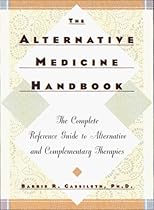 The rinds of citrus fruits also provide fragrant essential oils. Because of their highly concentrated aromas, they are usually diluted in "carrier" oils or alcoholic solutions. etiology The cause or origin of disease. extract A concentrated preparation such as an essence or concentrate created by withdrawing the active constituents by chemical or physical processes prepared as semiliquids, dry powders, or solids. fasting Technically, abstention from eating. The rinds of citrus fruits also provide fragrant essential oils. Because of their highly concentrated aromas, they are usually diluted in "carrier" oils or alcoholic solutions. etiology The cause or origin of disease. extract A concentrated preparation such as an essence or concentrate created by withdrawing the active constituents by chemical or physical processes prepared as semiliquids, dry powders, or solids. fasting Technically, abstention from eating. |
Stephanie Beling
See book keywords and concepts | 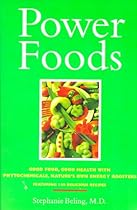 The great thing about the kumquat is that, unlike other citrus fruits, you eat the whole thing—the thin, sweet rind as well as the golden orange, pungent flesh. Keep that in mind when you shop for kumquats; look for plump, shiny fruits with an even, deep color and a smooth, unbruised skin. Kumquats are sold mostly in the wintertime and are now routinely found in well-stocked supermarkets.
To eat them, pinch the fruit between your fingers first; this sets the juices flowing and mingles the tartness of the flesh with the sweetness of the skin. The great thing about the kumquat is that, unlike other citrus fruits, you eat the whole thing—the thin, sweet rind as well as the golden orange, pungent flesh. Keep that in mind when you shop for kumquats; look for plump, shiny fruits with an even, deep color and a smooth, unbruised skin. Kumquats are sold mostly in the wintertime and are now routinely found in well-stocked supermarkets.
To eat them, pinch the fruit between your fingers first; this sets the juices flowing and mingles the tartness of the flesh with the sweetness of the skin. | | Above aU, fruits are treasure-houses of vitamins, particularly of Vitamin C.The citrus fruits, berries, melons, tropical fruits, and the yellows and oranges—apricots, peaches, nectarines, mangoes—are particularly good Vitamin C sources.
To all this must now be added the evidence that current research is yielding about the phytochemical power in the red, yellow, and orange fruits. Beta carotene, for all its newsworthiness, is only one of the 600-plus carotenoids that have thus far been identified by scientists. Carotenoids are serious antioxidants, but that is not all they do. | | Melons and papayas are soft-fleshed fruits.The citrus fruits tend to have stringy meat. Pears offer a chewy interior under their thin, tight skins. Grapes pop al dente the way pasta is supposed to.
The tastes of fruits are as varied as these textures, shapes, ways of growing, shades of color. Overall, however, fruits have a sweet taste. Sometimes it is pungent, as in a Granny Smith apple, and sometimes it's mild and sugary, as in a watermelon. Whatever the variation, the theme is a sweet one, giving the lie to the notion that things that taste good can't possibly be good for you. | | We might classify fruits by the way they grow: on stalks like pineapples and bananas, on vines like grapes and melons, on bushes or brambles like some of the berries, and on trees like everything from apples to cherries to peaches to citrus fruits.
We might even classify fruits by the environment in which they grow and the images they evoke. There are the tropical fruits, like papayas and pineapples, redolent of lush, humid islands brushed by warm ocean breezes. Chilled, these fruits help to cool us when it's hot. |
Barnet Meltzer, M.D.
See book keywords and concepts | 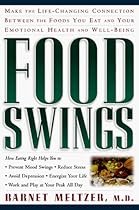 As with other citrus fruits, grapefruits are good for the immune system. They fight off cancer, and their high acid content enables them to break down and dissolve accumulated mucus in the glands, sinus, throat, or bronchial tubes.
Grapefruits also have a favorable influence on the metabolism. Anyone interested in permanent weight loss should be certain to have grapefruits and grapefruit juice as part of a daily diet. Both eliminate appetitis. As with other citrus fruits, grapefruits are good for the immune system. They fight off cancer, and their high acid content enables them to break down and dissolve accumulated mucus in the glands, sinus, throat, or bronchial tubes.
Grapefruits also have a favorable influence on the metabolism. Anyone interested in permanent weight loss should be certain to have grapefruits and grapefruit juice as part of a daily diet. Both eliminate appetitis. |
Dr. Gary Null
See book keywords and concepts |  Soy foods are rich in phytoestrogens called bioflavonoids; they normalize estrogen levels in the body. citrus fruits and berries are also helpful. They're rich in vitamin C, which helps normalize estrogen levels. Another nutritional factor in this problem may be vitamin A. A study showed that women with excessive menstrual bleeding, a common symptom with fibroids, had low levels of A, and that supplementation is effective in returning bleeding patterns to normal. Beta carotene sources include sweet potatoes, carrots, and romaine lettuce.
S. Soy foods are rich in phytoestrogens called bioflavonoids; they normalize estrogen levels in the body. citrus fruits and berries are also helpful. They're rich in vitamin C, which helps normalize estrogen levels. Another nutritional factor in this problem may be vitamin A. A study showed that women with excessive menstrual bleeding, a common symptom with fibroids, had low levels of A, and that supplementation is effective in returning bleeding patterns to normal. Beta carotene sources include sweet potatoes, carrots, and romaine lettuce.
S. |
Zorba Paster, M.D. and Susan Meltsner
See book keywords and concepts |  Even when we stick pretty closely to the recommendations illustrated by the food pyramid, our individual food choices (eschewing citrus fruits, for example, or avoiding animal protein) can leave us deficient in certain areas.
We've known for more than a hundred years that not getting sufficient amounts of certain vitamins or minerals promotes disease, from beri beri and pernicious anemia for those deficient in specific B vitamins to scurvy for folks lacking vitamin C. Even when we stick pretty closely to the recommendations illustrated by the food pyramid, our individual food choices (eschewing citrus fruits, for example, or avoiding animal protein) can leave us deficient in certain areas.
We've known for more than a hundred years that not getting sufficient amounts of certain vitamins or minerals promotes disease, from beri beri and pernicious anemia for those deficient in specific B vitamins to scurvy for folks lacking vitamin C. |
John Heinerman
See book keywords and concepts |  Of all the citrus fruits, tangerines seem to have a little more silicon than the others do.
Ugli fruit is quite high in potassium, phosphorus, vitamins A, C, and P (bioflavonoids), with moderate amounts of calcium, some B-complex vitamins, and magnesium, and marginal amounts of manganese, chromium, and zinc. This is the only citrus fruit I know of which has a trace amount of iodine in it, too. Of all the citrus fruits, tangerines seem to have a little more silicon than the others do.
Ugli fruit is quite high in potassium, phosphorus, vitamins A, C, and P (bioflavonoids), with moderate amounts of calcium, some B-complex vitamins, and magnesium, and marginal amounts of manganese, chromium, and zinc. This is the only citrus fruit I know of which has a trace amount of iodine in it, too. | | This has got to be the sorriest, saddest, most disgusting-looking variety of the citrus fruits I believe I've ever laid eyes on. It looks like a crummy grapefruit with a rough, loose-fitting, thick skin. The dull skin color is a mixture of green and russet-yellow. When fully ripe, the yellow portion of the skin takes on an orange-colored tint. The fruit feels spongy and the fruit comes to a point at the stem end. However, in spite of its hideous-looking, elephant hidelike peel, a surprisingly flavorful, juicy, sweet, fine-textured, pink-tinted flesh lurks beneath. | | The tangerine {Citrus reticulata) is the best-known of the mandarins, a large group of orange-skinned varieties of citrus fruits grown throughout the Orient. The tangerine was first propagated as far back as 2000 b.c. Most tangerines we find in the supermarket produce section today are grown in the coastal state of Florida. Some are imported from Mexico before the Florida fruit is ready to harvest, but the quality of this import is nothing to write home about. The most common varieties of Florida tangerines are the Robinson and the Dancy. | | Its skin, like the skin of all citrus fruits, has a sharp, alcoholic flavor. Some people enjoy eating raw kumquats, skin and all, but most of those sold in North America are used for decorative purposes.
Lemon. The lemon {.Citrus limori) is available year-round. Most are produced in California and Florida, but Arizona brings up the lead with its share of lemon groves. Because of certain federal government regulations restricting the free flow of California lemons to the rest of the nation, we sometimes end up buying imported lemons from Spain, Italy, and Chile. | | I'm convinced, from all of the nutritional studies I've read over the years, that sprouts really do contain a varied and powerful battery of nutrients, rivaling citrus fruits in vitamin C and beef in protein, and surpassing almost any other, known food source (except probably algae and seaweed) in completeness.
THERAPEUTIC BENEFITS
The best historical example of how marvelous a protein food bean sprouts are, is the Old Testament prophet Daniel. Ellen G. |
Daniel B. Mowrey, Ph.D.
See book keywords and concepts |  PECTIN, as found in citrus fruits, apples, potatoes, green beans and strawberries, serves the natural purpose in plants of binding adjacent cell walls. In 1957 a group of researchers revealed that dietary Pectin (in rats) increased the excretion of lipids, cholesterol and bile acids (2). From this inauspicious beginning reports began to mount which verified those data, and extended them to include humans. By 1977, the effect had been thoroughly documented and established. PECTIN, as found in citrus fruits, apples, potatoes, green beans and strawberries, serves the natural purpose in plants of binding adjacent cell walls. In 1957 a group of researchers revealed that dietary Pectin (in rats) increased the excretion of lipids, cholesterol and bile acids (2). From this inauspicious beginning reports began to mount which verified those data, and extended them to include humans. By 1977, the effect had been thoroughly documented and established. | | Pectins ate the water soluble substances that bond adjacent cell walls in the tissues of many plants, including apples, citrus fruits, potatoes, strawberries and green beans. They yield a gel which is the basis of fruit jellies. Pectins and gums bind with bile acids, and decrease cholesterol levels and fat absorption. 4. Lignins are plant polymers that combine with cellulose to form plant cell walls and the cementing material between them. Lignin has been found to reduce time of passage of stomach contents, bind with bile acids and lower cholesterol levels. |
Ronald Klatz and Robert Goldman
See book keywords and concepts | 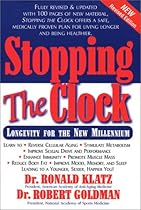 Besides supplements, vitamin C is found in various foods, including citrus fruits and juices, red or green bell peppers, strawberries, tomatoes, broccoli and cantaloupe.
One kiwi fruit contains 80 mg of vitamin C—that's more than a large orange, which contains about 70 mg. Kiwis are also loaded with potassium as well.
Recommendations for taking vitamin C vary widely. Dr. Pauling recommended 3,200 to 12,000 mg a day. Several other researchers themselves take several thousand mg daily, believing that higher levels of vitamin C convey ever-higher anti-aging benefits. Besides supplements, vitamin C is found in various foods, including citrus fruits and juices, red or green bell peppers, strawberries, tomatoes, broccoli and cantaloupe.
One kiwi fruit contains 80 mg of vitamin C—that's more than a large orange, which contains about 70 mg. Kiwis are also loaded with potassium as well.
Recommendations for taking vitamin C vary widely. Dr. Pauling recommended 3,200 to 12,000 mg a day. Several other researchers themselves take several thousand mg daily, believing that higher levels of vitamin C convey ever-higher anti-aging benefits. | | Food sources
Green peppers, broccoli, Brussels sprouts, potatoes, spinach, strawberries, tomatoes, papaya, citrus fruits.
Megadoses: How Much Is Too Much?
For years now researchers and physicians have argued the benefits and risks associated with taking megadoses of vitamin C. While many studies have legitimately found that high doses work efficiently to treat a variety of ills, many physicians and medical organizations contend that megadoses of this vitamin don't have the same health benefits as do the drugs they can prescribe. According to Dr. |
Mark Bricklin
See book keywords and concepts | 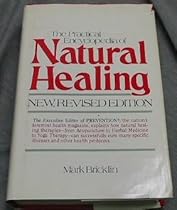 Eat more foods high in vitamin C: citrus fruits, melons, broccoli, brussels sprouts and cauliflower. If you have a hard time getting fresh fruits and vegetables, potatoes are also a good source of C. Try to have at least one really good source of this vitamin with every meal; remember that it helps block the formation of nitrosamines in the stomach.
16. Don't forget foods rich in selenium. The best bets are whole grains, seafood and mushrooms.
17. Favor the cruciferous vegetables: broccoli, cabbage, brussels sprouts and cauliflower. Eat more foods high in vitamin C: citrus fruits, melons, broccoli, brussels sprouts and cauliflower. If you have a hard time getting fresh fruits and vegetables, potatoes are also a good source of C. Try to have at least one really good source of this vitamin with every meal; remember that it helps block the formation of nitrosamines in the stomach.
16. Don't forget foods rich in selenium. The best bets are whole grains, seafood and mushrooms.
17. Favor the cruciferous vegetables: broccoli, cabbage, brussels sprouts and cauliflower. | | Bioflavonoids, usually extracted for supplements from the inner peel and white pulpy portion of citrus fruits, are widely recognized in Europe for their ability to strengthen blood vessels, particularly the walls of the capillaries. In treating menorrhagia patients with bioflavonoids, the French doctors observed "progressive improvement, with the most marked improvement achieved by the third menstrual cycle." In Johannesburg, South Africa, doctors reported that vitamin A can reduce heavy bleeding (South African Medical Journal, February 12, 1977). | | The possibility that vitamin C helps prevent cancer is just one of the many reasons that we should make sure that we're getting enough of this key nutrient. All citrus fruits and melons are excellent sources; so are broccoli, brussels sprouts, cabbage, cauliflower, sweet peppers, fruits in general, tomatoes and dark green leafy vegetables.
Among the dietary requirements of humans are a surprisingly large number of minerals that are needed in extremely small amounts. Yet, no matter how small the requirement, if it isn't met, the results can be serious. | | Bioflavonoids are particularly abundant in the pulp, rind and juice of oranges, lemons and other citrus fruits. One woman told us that "I have found orange peel to be the best antihistamine I have ever tried. I have been a victim of allergy all my life. I keep the peels in the refrigerator for several days until there is enough to work up, and I cut them in small strips and soak them in apple cider vinegar solution for several hours, drain off well, place in a pan with honey, and cook down but not to the candy stage. Then I put them in the refrigerator and eat as I need them. |
page 16 of 21 | Next ->
FAIR USE NOTICE: The research quoted here is provided under the protection of Fair Use provisions and published by the 501(c)3 non-profit Consumer Wellness Center for the purposes of public comment and education. Authors / publishers may submit books for consideration of inclusion here.
TERMS OF USE: Read full terms of use. Citations of text from NaturalPedia must include: 1) Full credit to the original author and book title. 2) Secondary credit to the Natural News Naturalpedia as a research resource and a link to www.NaturalNews.com/np/index.html
This unique compilation of research is copyright (c) 2008 by the non-profit Consumer Wellness Center.
ABOUT THE CREATOR OF NATURALPEDIA: Mike Adams, the creator of this NaturalNews Naturalpedia, is the editor of NaturalNews.com, the internet's top natural health news site, creator of the Honest Food Guide (www.HonestFoodGuide.org), a free downloadable consumer food guide based on natural health principles, author of Grocery Warning, The 7 Laws of Nutrition, Natural Health Solutions, and many other books available at www.TruthPublishing.com, creator of the earth-friendly EcoLEDs company (www.EcoLEDs.com) that manufactures energy-efficient LED lighting products, founder of Arial Software (www.ArialSoftware.com), a permission e-mail technology company, creator of the CounterThink Cartoon series (www.NaturalNews.com/index-cartoons.html) and author of over 1,500 articles, interviews, special reports and reference guides available at www.NaturalNews.com. Adams' personal philosophy and health statistics are available at www.HealthRanger.org.
|
 |
Refine your search
with Citrus fruits...
...and Foods and Beverages:...and Fruits
...and Vegetables
...and Juice
...and Fruit
...and Oranges
...and Wheat
...and Broccoli
...and Citrus
...and Tomatoes
...and Sugar
...and Key Health Concepts:...and Foods
...and Diet
...and Products
...and Symptoms
...and Disease
...and Nutrients
...and Supplements
...and Phytochemicals
...and Health
...and Treatment
...and Nutrients:...and Vitamin C
...and Vitamin
...and Antioxidant
...and Vitamin E
...and Calcium
...and Flavonoids
...and Antioxidants
...and Iron
...and Magnesium
...and Potassium
...and Substances:...and Acid
...and Food
...and Water
...and Bacteria
...and Acids
...and Lead
...and Cream
...and Liquid
...and Extract
...and Fluids
...and Anatomy:...and Body
...and Skin
...and Blood
...and Cells
...and Liver
...and Stomach
...and Heart
...and Immune system
...and Colon
...and Tissue
...and Actions:...and Eat
...and Avoid
...and Eating
...and Drink
...and Taking
...and Growth
...and Drinking
...and Triggers
...and Elimination
...and Adding
...and Adjectives:...and Orange
...and Green
...and Red
...and Whole
...and Fresh
...and Sweet
...and Natural
...and Raw
...and Healthy
...and Essential
...and Health Conditions and Diseases:...and Cancer
...and Pain
...and Inflammation
...and Heart disease
...and Headaches
...and Allergies
...and Arthritis
...and Diarrhea
...and Cancers
...and Allergy
...and Concepts:...and Sources
...and Risk
...and Studies
...and Study
...and Time
...and Healing
...and Source
...and Example
...and Research
...and Substances
...and Physiology:...and Prevent
...and Levels
...and Helps
...and Effects
...and Increase
...and Intake
...and Effect
...and Immune
...and Reaction
...and Increases
...and Objects:...and People
...and Oil
...and Plant
...and Vitamins
...and Produce
...and University
...and Diets
...and List
...and Glass
...and Animal
...and Macronutrients:...and Fiber
...and Seeds
...and Enzymes
...and Oils
...and Fats
...and Protein
...and Mineral
...and Salt
...and Proteins
...and Fatty acids
...and Plants and Herbs:...and Garlic
...and Peel
...and Root
...and Ginger
...and Leaves
...and Tobacco
...and Green tea
...and Spices
...and Flowers
...and Rosemary
...and Who:...and Women
...and Patients
...and Men
...and Doctors
...and Children
...and Animals
...and Child
...and Family
...and Human
...and Adults
...and Chemicals:...and Caffeine
...and Free radicals
...and Carcinogens
...and Additives
...and Nicotine
...and Pesticides
...and Aluminum
...and Poisons
...and Dyes
...and Mercury
...and Medical Terms:...and Properties
...and Doses
...and Dosage
...and Dose
...and Results
...and Drops
...and Syndrome
...and Gene
...and Potency
...and Dosages
...and Medical Adjectives:...and Digestive
...and Painful
...and Soluble
...and Intestinal
...and Oral
...and Therapeutic
...and Biological
...and Acute
...and Gastric
...and Scientific
...and Where:...and Florida
...and United states
...and Europe
...and Chinese
...and Asia
...and China
...and California
...and New york
...and America
...and Asian
...and Biological Functions:...and Digestion
...and Period
...and Metabolism
...and Attention
...and Strength
...and Breath
...and Concentration
...and Weight loss
...and Menstruation
...and Memory
...and Hormones and Biochemistry:...and Estrogen
...and Insulin
...and Hormones
...and Homocysteine
...and Stomach acid
...and Saliva
...and Lipids
...and Histamine
...and Neurotransmitter
...and Cortisol
...and Ingredients:...and Sodium
...and Food additives
...and Aspartame
...and Preservatives
...and Lactose
...and Msg
...and Fructose
...and Drugs:...and Diuretics
...and Aspirin
...and Diuretic
...and Tablets
...and Antibiotics
...and Chemotherapy
...and Antibiotic
...and Vaccine
...and Laxative
...and Antidepressant
...and Treatment Modalities:...and Fasting
...and Detoxification
...and Cleanse
...and Massage
...and Ayurvedic
...and Acupuncture
...and Chinese medicine
...and Aerobic exercise
...and Meditation
...and Relaxation
...and Properties:...and Anti-inflammatory
...and Oxidation
...and Relieving
...and Antiseptic
...and Relieves
...and Irritant
...and Expectorant
...and Antifungal
...and Antimicrobial
...and Calming
...and Supplements:...and Flaxseed oil
...and Spirulina
...and Fish oil
...and Glucosamine
...and Lactobacillus
...and Coenzyme q10
...and Biological Measures:...and Blood pressure
...and Body weight
...and Blood sugar levels
...and Blood levels
...and Blood cholesterol
...and Blood glucose
...and Triglycerides
...and Heart rate
...and Organizations:...and Medical center
...and Fda
...and Health food stores
...and School of medicine
...and National cancer institute
...and Medical school
...and Usda
...and Clinic
...and Manufacturers
...and Nci
...and Animals:...and Turkey
...and Dogs
...and Rats
...and Mice
...and Cats
...and Worms
...and Cat
...and Insects
...and Horse
|
Related Concepts:
Foods
Fruits
Vitamin C
Vitamin
Diet
Vegetables
Acid
Food
Body
Eat
Cancer
People
Water
Avoid
Juice
Fruit
Products
Oranges
Skin
Fiber
Blood
Eating
Wheat
Broccoli
Prevent
Citrus
Tomatoes
Symptoms
Levels
Sources
Antioxidant
Pain
Disease
Orange
Sugar
Vitamin E
Beans
Drink
Tea
Risk
Green
Fruits and vegetables
Nutrients
Oil
Cells
Red
Onions
Dairy products
Helps
Apples
Whole
Studies
Lemons
Fresh
Carrots
Alcohol
Grapefruit
Study
Calcium
Grains
Seeds
Flavonoids
Corn
Effects
Antioxidants
Time
Peppers
Coffee
Nuts
Fish
Chocolate
Dairy
Sweet
Increase
Garlic
Cabbage
Juices
Inflammation
Supplements
Berries
Liver
Women
Sprouts
Meat
Stomach
Eggs
Natural
Heart
Raw
Intake
Peel
Healing
Healthy
Heart disease
Limes
Enzymes
Phytochemicals
Legumes
Potatoes
Essential
|












